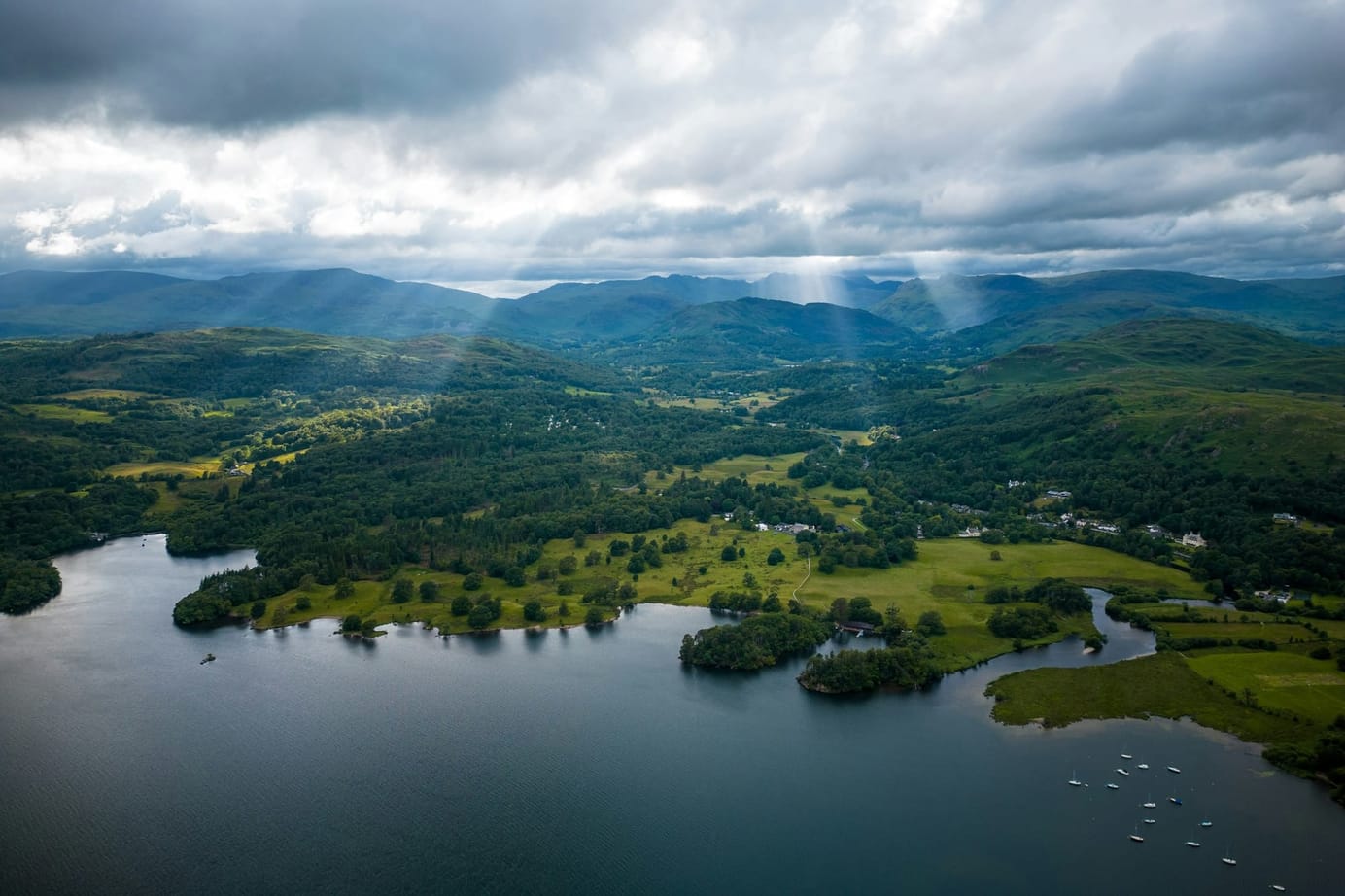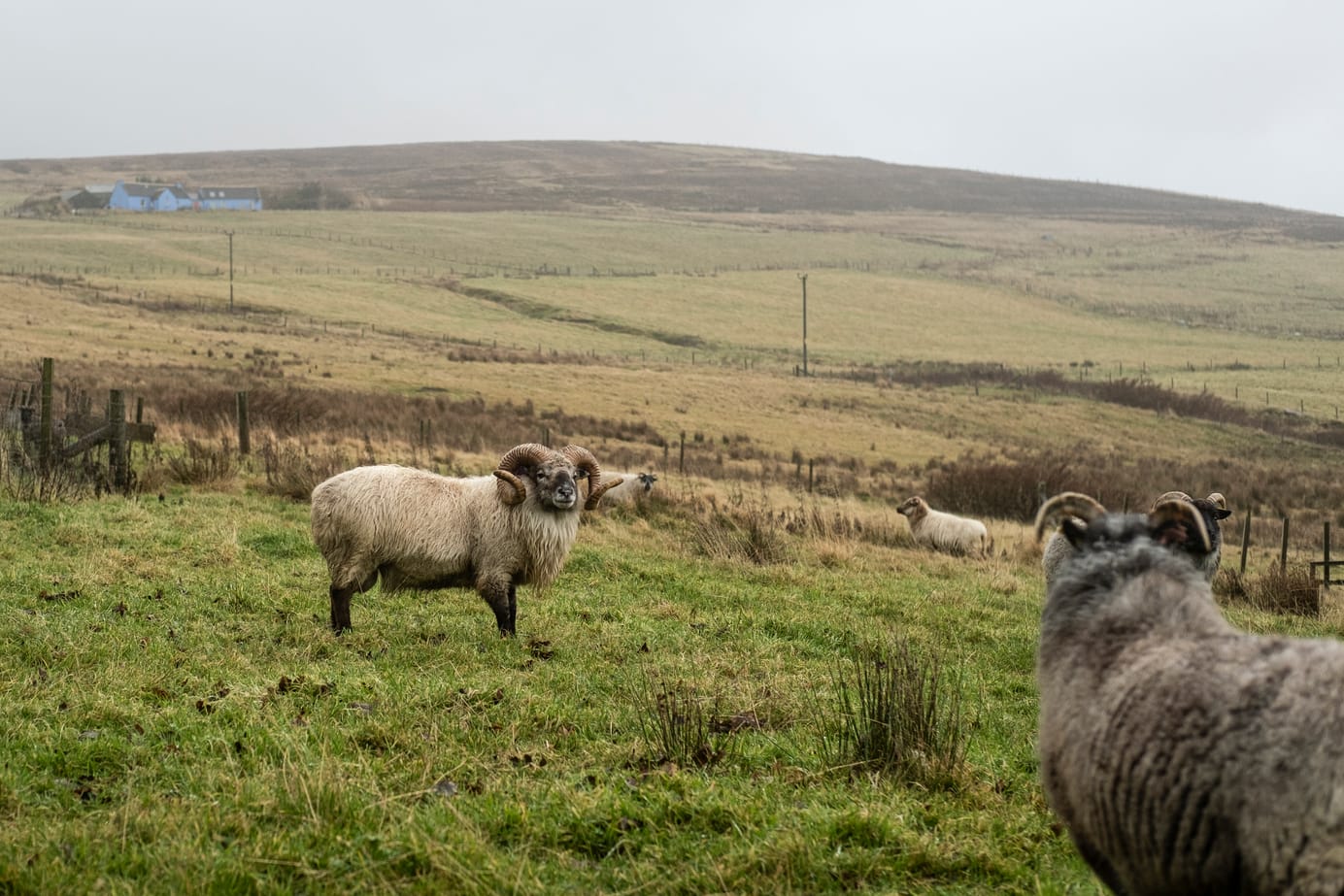
Is this Britain's loneliest rainforest?
On the bare landscape of Harris, a small copse inspires hope for the revival of an ecosystem.
Message from the editor: To celebrate our relaunch, we are running a special offer on subscriptions until Tuesday. Sign up using the links below.
Alongside a loch on the Isle of Harris is a small group of rowan trees, their trunks crusted with lichen. Amid the bare landscape of the Outer Hebrides, they seem like sentinels from a different age.
Most people would probably not think twice when confronted with such a copse. But when Amanda Barrett and her partner Owen Newman, both wildlife documentary makers who spent 30 years working with Sir David Attenborough, spied them during their New Year’s Day walk, they immediately sensed they were something special.
There are, as Amanda points out, virtually no substantial trees on Harris – the result of millennia of farming as well as prehistoric climate change. “So imagine our surprise when we caught sight of a large tree glowing gold in the low sun on the far side of a loch,” she says.
“It was this enormous dome: beautiful, shining an elfin goldy-green, and as we got closer to it, we realised that was because it was a very thick-trunked tree covered in lichen. On closer inspection, we found another three slightly smaller trees on the edge of the loch that were also festooned with this lichen.”





The lichen in question was tree lungwort, Lobaria pulmonaria. Amanda immediately understood its significance.
She had just finished reading The Lost Rainforests of Britain, by writer and campaigner Guy Shrubsole. In the book, he compares its appearance to dragon scales, and explains how it thrives in temperate rainforest – areas of woodland that receive at least 1,400mm of rain a year, and where July temperatures average below 16˚C. According to a map drawn up by the ecologist Christopher Ellis in 2016, Harris sits firmly in Britain's rainforest zone.
Such rainforests would once have covered one-fifth of Great Britain – effectively, the west coasts of England, Scotland and Wales – but today only one percent remains. It occurred to Amanda that what she was witnessing was not just any old tree, but a tiny fragment of that vanished ecosystem.
“The thought struck me that surely this was the loneliest rainforest in Britain,” she says.

The discovery was partly down to good fortune. The trees sit in the shadow of Roineabhal. Around two decades ago, this mountain was the subject of a huge controversy, when a mining company proposed a super quarry to extract its moon-like anorthosite, effectively removing a third of the entire mountain. Had the development gone ahead, it is unlikely Amanda and Owen would have been able to walk anywhere near the loch that day, let alone spot a few rowans growing out of the treacherous scree.
In the long term, Amanda credits the survival of the rowans to the huge boulders that surround them, possibly protecting them from sheep and rabbits when they were vulnerable saplings.
Perhaps when their branches finally emerged from their shelter, they were sufficiently robust to withstand attention from sheep. Or maybe the ground was sufficiently treacherous to dissuade any ungulates from investigating too closely. Either way, the tiny rainforest escaped the pressures that have prevented any other woodland regeneration on Harris for hundreds, if not thousands, of years.

Protecting and restoring Britain’s temperate rainforests has become a hot topic in recent years, but Harris is so devoid of trees that it does not feature in the plans of Saving Scotland’s Rainforest, an alliance of environmental NGOs that includes Plantlife Scotland and the Woodland Trust Scotland.
Elsewhere, the Alliance has a goal of bringing all temperate rainforest in Scotland into good condition and doubling its area from 30,000 to 60,000 hectares by 2045 – but even that, estimates project manager Julie Stoneman, will cost £500 million. On mainland Scotland and the Inner Hebridean islands, the biggest impediments to woodland restoration are invasive non-native rhododendron and deer.
Rhododendron ponticum is a flowering shrub native to the Iberian Peninsula and the Caucasus of West Asia. It invades woodlands, growing fast and outcompeting native trees while also shading out wildflowers and other plants on the forest floor. It can really only be treated on a large scale over a long period of time – at least a decade – often using expensive herbicides.
Deer, which prevent forest regeneration through browsing and grazing, must either be culled to sustainable levels; or else the woodland must be fenced to prevent them having access. But both these actions require the agreement and cooperation of landowners, and this isn’t always a given. “It’s a very sensitive subject,” says Stoneman.
Meanwhile, Amanda is hoping that her tiny rainforest may contain the seeds of a larger and richer ecosystem – if only it can be given the chance.
“I am going to try and raise awareness of this exciting find among some local people to see if these rarities can be protected and, if they can, more trees might sprout,” she says. “Just even a square mile protected from sheep might give these trees a chance to reproduce, and in 50 years or so, you could have a real rainforest in this extraordinary place.”
This article was made possible by funding from The Pebble Trust.
Subscribe to our newsletter
Members receive our premium weekly digest of nature news from across Britain.
Comments
Sign in or become a Inkcap Journal member to join the conversation.
Just enter your email below to get a log in link.








